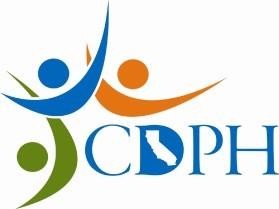



SONIA Y. ANGELL, MD, MPH GAVIN NEWSOM
State Public Health Officer & Director Governor
COVID-19 and Reopening In-Person Learning Framework for K-12 Schools in California, 2020-2021 School Year
July 17, 2020
Overview
California schools have been closed for in-person instruction since mid-March 2020 due to the COVID-19 pandemic. School closures to in-person instruction were part of a broader set of recommendations intended to reduce transmission of SARS-CoV-2, the virus that causes COVID-19. CDPH developed the following framework to support school communities as they decide when and how to implement in-person instruction for the 2020-2021 school year. New evidence and data about COVID-19 transmission, including variations by age, and the effectiveness of disease control and mitigation strategies continues to emerge regularly. Recommendations regarding in-person school reopening and closure should be based on the available evidence as well state and local disease trends.
The CA School Sector Specific Guidelines, and the Centers for Disease Control and Prevention CDC have published additional guidance on school re-entry.
In-Person Re-Opening Criteria
Schools and school districts may reopen for in-person instruction at any time if they are located in a local health jurisdiction (LHJ) that has not been on the county1 monitoring list within the prior 14 days.
If the LHJ has been on the monitoring list within the last 14 days, the school must conduct distance learning only, until their LHJ has been off the monitoring list for at least 14 days.2
1 School districts in LHJs that are cities are considered to be included as part of the county if the county is on the monitoring list.
2 A waiver of this criteria may be granted by the local health officer for elementary schools to open for in-person instruction. A waiver may only be granted if one is requested by the superintendent (or equivalent for charter or private schools), in consultation with labor, parent and community organizations. Local health officers must review local community epidemiological data, consider other public health interventions, and consult with CDPH when considering a waiver request.
Guidance Once Re-Opened to In-Person Instruction
How should schools think about testing?
Once schools are re-opened to at least some in-person instruction, it is recommended that surveillance testing be implemented based on the local disease trends. If epidemiological data indicates concern for increasing community transmission, schools should increase testing of staff to detect potential cases as lab testing capacity allows.
Who should be tested and how often?
School staff are essential workers, and staff includes teachers, para- professionals, cafeteria workers, janitors, bus drivers, or any other school employee that may have contact with students or other staff. School districts and schools shall test staff periodically, as testing capacity permits and as practicable. Examples of recommended frequency include testing all staff over 2 months, where 25% of staff are tested every 2 weeks, or 50% every month to rotate testing of all staff over time.
What if a school or school district reopens to in-person instruction, but the county is later placed on the county monitoring list?
Schools should begin testing staff, or increase frequency of staff testing but are not required to close.
What measures should be taken when a student, teacher or staff member has symptoms, is a contact of someone infected, or is diagnosed with COVID-19?
| Student or Staff with: | Action | Communication | |
|---|---|---|---|
| 1. | COVID-19 Symptoms (e.g., fever, cough, loss of taste or smell, difficulty breathing)
Symptom Screening: Per CA School Sector Specific Guidelines |
Send home
Recommend testing (If positive, see #3, if negative, see #4) School/classroom remain open |
No Action needed |
| 2. | Close contact (†) with a confirmed COVID-19 case | Send home
Quarantine for 14 days from last exposure Recommend testing (but will not shorten 14- day quarantine) School/classroom remain open |
Consider school community notification of a known contact |
| 3. | Confirmed COVID-19 case infection | Notify the local public health department
Isolate case and exclude from school for 10 days from symptom onset or test date Identify contacts (†), quarantine & exclude exposed contacts (likely entire cohort (††)) for 14 days after the last date the case was present at school while infectious Recommend testing of contacts, prioritize symptomatic contacts (but will not shorten 14- day quarantine) Disinfection and cleaning of classroom and primary spaces where case spent significant time School remains open |
School community notification of a known case |
| 4. | Tests negative after symptoms | May return to school 3 days after symptoms resolve
School/classroom remain open |
Consider school community notification if prior awareness of testing |
(†) A contact is defined as a person who is <6 feet from a case for >15 minutes. In some school situations, it may be difficult to determine whether individuals have met this criterion and an entire cohort, classroom, or other group may need to be considered exposed, particularly if people have spent time together indoors.
(††) A cohort is a stable group with fixed membership that stays together for all courses and activities (e.g., lunch, recess, etc.) and avoids contact with other persons or cohorts.
Guidance on School Closure
What are the criteria for closing a school?
Individual school closure is recommended based on the number of cases, the percentage of the teacher/students/staff that are positive for COVID-19, and following consultation with the Local Health Officer. Individual school closure may be appropriate when there are multiple cases in multiple cohorts at a school or when at least 5 percent of the total number of teachers/student/staff are cases within a 14-day period, depending on the size and physical layout of the school.
The Local Health Officer may also determine school closure is warranted for other reasons, including results from public health investigation or other local epidemiological data.
If a school is closed for in-person learning, when may it reopen?
Schools may typically reopen after 14 days and the following have occurred:
Cleaning and disinfection
Public health investigation
Consultation with the local public health department
What are the criteria for closing a school district?
A superintendent should close a school district if 25% or more of schools in a district have closed due to COVID-19 within 14 days, and in consultation with the local public health department.
If a school district is closed, when may it reopen?
Districts may typically reopen after 14 days, in consultation with the local public health department.
State Resources for Case, Contact & Outbreak Investigations
California is committed to supporting local health departments with resources and other technical assistance regarding school case, contact, and outbreak investigations.

